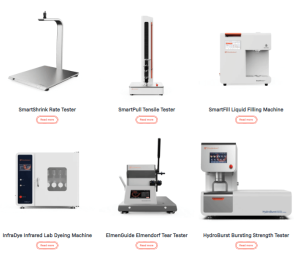Laboratory internal quality control can reflect whether the quality of analysis is stable or not and is the basis and core of quality control. Internal quality control systems should try to cover every testing personnel, every testing equipment, and every type of testing item. At the same time, special attention should be paid to the weak links, such as customer complaints, new items, untraceable instruments and equipment, new personnel, standard changes in the project, non-standard methods, and non-routine testing items. Commonly used internal quality control methods include the quality control chart method, blank analysis, parallel sample analysis, spiked sample analysis, standard material or quality control sample comparison analysis, and comparison analysis in QC labs. Comparative analysis is a kind of reproducibility testing, the main methods include method comparison, personnel comparison, and instrument comparison. Laboratory to develop an internal quality control program can give priority to the use of personnel comparison, method comparison, instrument comparison, sample retesting, quality control charts, and other methods.
Monitoring of standard samples
Quality Control Process
The usual practice is that the laboratory directly uses internal standard samples as monitoring samples, and periodically or irregularly the monitoring samples are in the form of comparison samples or cipher samples, and the sample testing is carried out at the same time with the same process and method. The test results are reported to the relevant quality control personnel after the completion of the testing room, or the testing personnel can arrange to insert the standard substance at the same time as the sample testing to verify the accuracy of the test results.
Scope of application
Generally, it can be used for the control of instrument status, the control of the sample testing process, the comparison of instruments, personnel, and methods, and inter-laboratory comparison within the laboratory. This method is characterized by high reliability but high cost.
Personnel comparison
Quality control process
The laboratory within the testing personnel in a reasonable period, on the same sample, using the same method, on the same testing instrument to complete the testing task, compare the degree of compliance with the test results, to determine the comparability and stability of the testing personnel’s ability to operate. Laboratory personnel comparison, the comparison project as far as possible to detect the complexity of some links, especially the manual operation steps. The operation of the testing personnel is to be independent of each other, to avoid interference between each other. It is worth noting that, in general, the laboratory in the frequency of supervision of new personnel on the job is higher than the normal in-service personnel supervision. It is also advisable to always use the results reported by experienced and consistently competent testing personnel in the laboratory as the reference value when organizing personnel comparisons.
Scope of application
The main purpose of personnel comparison organized within the laboratory is to evaluate whether the testing personnel have the ability and qualification to take up the post or change the post. Therefore, it is mainly used to assess the testing technical ability of recruits and newly trained personnel and to supervise the testing technical ability of in-service personnel.
Method comparison
Quality control process
Method comparison is a comparative test between different analytical methods, meaning that the same inspector uses different testing methods for the same sample, testing the same item, comparing the degree of conformity of the results, and determining their comparability, to verify the reliability of the method. The test object of method comparison is the testing method. The main purpose of method comparison is to evaluate whether there is a significant difference between the results of different testing methods. When comparing, the test results obtained by the standard method are usually used as the reference value, and the test results of other testing methods are used to compare with them, and the difference in the test results between the methods should be in line with the evaluation requirements, or else it is proved that the non-standard method is not applicable, or needs to be further modified or optimized.
Scope of application
Method comparison is mainly used to examine the systematic errors that exist between different testing methods, to monitor the validity of the test results, and secondly, it is also used to confirm the non-standard methods involved in the laboratory.
The overall detection methods generally include sample pretreatment methods and instrumental methods, and as long as the pretreatment methods are different, regardless of whether the instrumental methods are the same or not, they are categorized as method comparisons. However, if the sample pre-treatment methods are the same in different testing methods, and only the testing instrumentation is different, they are generally categorized as instrumental comparisons.
Instrument comparison
Quality control process
Instrument comparison refers to the same inspector using different instruments and equipment (including the same or different types of instruments, etc.), the same samples using the same detection method for testing, comparing the degree of compliance with the results, to determine the comparability of instrument performance. The assessment object of instrument comparison is the testing instrument. The main purpose of instrument comparison is to evaluate the performance differences between different testing instruments (such as sensitivity, precision, anti-interference ability, etc.), the degree of conformity of the results and the existence of problems. The selected test items and test methods should be able to fully reflect the performance of the instruments participating in the comparison.
Scope of application
Instrument comparison is usually used in the laboratory to verify and control the performance of new or repaired instruments and equipment, and can also be used to assess the degree of discrepancy in test results between instruments and equipment. When instrument comparison is performed, particular attention should be paid to maintaining consistency of conditions at all points in the comparison process except for the instrument, to ensure that the differences in results adequately respond to the performance of the instrument.
Sample retesting
Quality control process
Sample retesting refers to a different time (or a reasonable time interval), the same sample again for testing, by comparing the consistency of the results of the two measurements before and after to determine whether there are problems in the testing process, to verify the reliability and stability of the test data. If the results of the 2 tests meet the evaluation requirements, it means that the laboratory’s testing capability for the item is continuously effective. If not, the reasons should be analyzed, corrective measures should be taken, and if necessary, the results of the previous test should be traced back. Sample retesting can be considered a special kind of internal laboratory comparison, that is, a different time comparison. Retained samples for retesting should pay attention to the stability of the performance indicators of the samples used, i.e. there should be sufficient data to show or be assessed by an expert to show that the retained samples are assigned stable values.
Scope of application
Retained samples as an internal quality control mean, mainly applicable to a certain level of test data or positive samples, samples to be tested items are relatively stable, and when it is necessary to monitor the characteristics of the retained samples, the reproducibility of the test results for verification, etc.. Taking the sample retesting is conducive to monitoring the continued stability of the test results of the project and observing its development trend. Can also prompt the inspectors to take each test seriously, to improve their own quality and technical level. However, it should be noted that the sample retesting can only control the repeatability of the test results, and can not judge whether there is a systematic error in the test results.
Blank test
Quality control process
A blank test is the process of obtaining analytical results by quantitatively analyzing a sample without adding the sample to be tested, using the same methods and steps as those used to determine the sample to be tested. The result measured by the blank test is called the blank test value, or blank value for short. The blank value generally reflects the background of the test system, including the noise of the test instrument, impurities in the reagents, the environment and the operation process of contamination, and other factors on the sample to produce a comprehensive impact, which is directly related to the accuracy of the final test results, can be deducted from the analysis results of the sample. This deduction can effectively reduce the systematic error caused by reagent impurity or reagent interference.
Scope of application
On the one hand, the laboratory can effectively evaluate and correct errors caused by impurities in reagents, experimental water, utensils, and environmental factors by performing blank tests. On the other hand, while ensuring effective monitoring of blank values, it is also possible to grasp the differences between different analytical methods and testing personnel. In addition, the blank test can also accurately assess the detection limit and limit of quantification and other technical indicators of the detection method.
Repetitive testing
Quality Control Process
Repeat test, i.e. repetitive test, also known as parallel sample test, refers to two or more tests conducted under repetitive conditions. Repeatability conditions refer to the test conditions in the same laboratory, by the same tester using the same equipment, according to the same test method, in a short period on the same object to be tested independently of each other.
ChiuVention’s series of smart textile machinery boasts High repeatability and High reproducibility. High repeatability means that the same set of samples, the same machine, after multiple tests, the results are consistent. High reproducibility means that the same set of samples, different machines of the same model, after multiple tests, the results are consistent.
Scope of application
Repeat testing can be widely used in the laboratory to monitor and evaluate the uniformity of sample preparation, the stability of testing equipment or instruments, the precision of testing methods, the technical level of testing personnel, and the analysis interval between parallel samples. It should be noted that the factors that may have a significant impact on the precision of the test during the assay will vary considerably with the level of the component to be tested.
Recovery test
Quality Control Process
A recovery test, also known as “spiked recovery test”, is usually a series of operations in which a known mass or concentration of the measured substance is added to the measured sample as the object of measurement, the measurement is carried out by a given method, the results are compared with the known mass or concentration, and the incremental increase in the analytical results of the measured substance is calculated as a percentage of the added known amount. The percentage is called the method. The calculated percentage is called the “spiked recovery” of the substance by the method, or “recovery” for short. In general, the closer the recovery rate is to 100%, the more accurate the quantitative analysis result is, so the size of the recovery rate can be used to evaluate the accuracy of the quantitative analysis result.
Scope of application
The recovery rate test has the characteristics of simple method operation and low cost. It can comprehensively reflect the errors caused by a variety of factors and plays a very important role in the daily quality control of testing laboratories. The main scope of application of the recovery test includes various types of chemical analysis, such as all kinds of products and materials in the low content of heavy metals, organic compounds, and other items of the test results to control the accuracy of the chemical testing method, the verification of the reliability of the chemical testing method, chemical testing of the sample pre-treatment or the validity of the instrument determination.
Verification of calibration curves
Overview of the process
Calibration curves are used to describe the quantitative relationship between the concentration or amount of a substance to be measured and the corresponding or indicated value of a detection instrument. Calibration curves obtained by using standard solutions and following normal sample testing procedures with simplified or identical analytical treatments are referred to as standard curves and working curves. To ensure that the calibration curves always have good precision and accuracy, it is necessary to adopt appropriate verification methods. For precision verification, three points of low, medium, and high concentration are usually taken on the calibration curve. The verification of accuracy is usually controlled by the method of spiked recovery test.
Scope of application
The calibration curve method is often used in laboratory instrumental analysis, usually the concentration of the sample components to be tested fluctuates greatly, and the sample batch is large. The precision and accuracy of the calibration curve used in the testing process will be affected by a variety of factors such as laboratory testing conditions, the response performance of the testing instrument, the operating level of the testing personnel. Regular verification can on the one hand verify the response performance of the instrument and the stability of the testing personnel’s operation, and on the other hand, it can also get the stability verification information of the standard solution used in plotting the curve at the same time.
Quality Control Chart
Quality Control Process
To control the precision and accuracy of test results, it is often necessary to continuously use monitoring samples for test control during the testing process. The accumulated monitoring data are statistically analyzed, and an analytical control chart is drawn by calculating statistical quantities such as mean, extreme deviation, standard deviation, etc., and determining the center line, upper and lower control limits, as well as the upper and lower auxiliary lines and the upper and lower warning lines according to the procedures for the production of a quality control chart. After determining that the measurement process is in a stable or controlled state by analyzing the control chart, the analytical control chart can be converted to a control chart, and the control data measured daily can be traced to determine whether there is any systematic variation or trend.
Scope of application
Quality control charts apply to the following areas:
(i) When it is desired to predict the range of variation in process output;
(ii) When determining whether a process is under statistical control;
(iii) When analyzing whether the source of process variation is random or non-random;
(iv) When deciding how to complete a quality improvement project one to prevent particular problems or to make fundamental changes to the process;
(v) When it is desirable to control the current process so that problems can be detected and remedied as they arise.
Quality control charts are undoubtedly an important evaluation method in quality control activities. However, it should be noted that the evaluation of the conclusion of this method is dependence on the testing data of other QC samples, and the purpose of quality control is achieved through the statistical analysis of QC data. Therefore, it is more inclined to serve as a tool for evaluating QC data than other QC methods, and in this respect, it is still differentiated from the rest of the internal laboratory QC methods.
Conclusion
Lab Quality control is an important tool to ensure the accuracy and validity of laboratory test results. It is an effective tool for the laboratory to continuously improve the management system and is an eternal theme in laboratory management. Therefore, the laboratory should combine with its actual situation, consciously, frequently, systematically, and purposefully carry out quality control activities, and use its data to conduct in-depth analysis, find deficiencies, and make improvements, so that the laboratory’s management level and technical capabilities are continuously improved.





